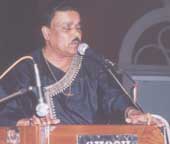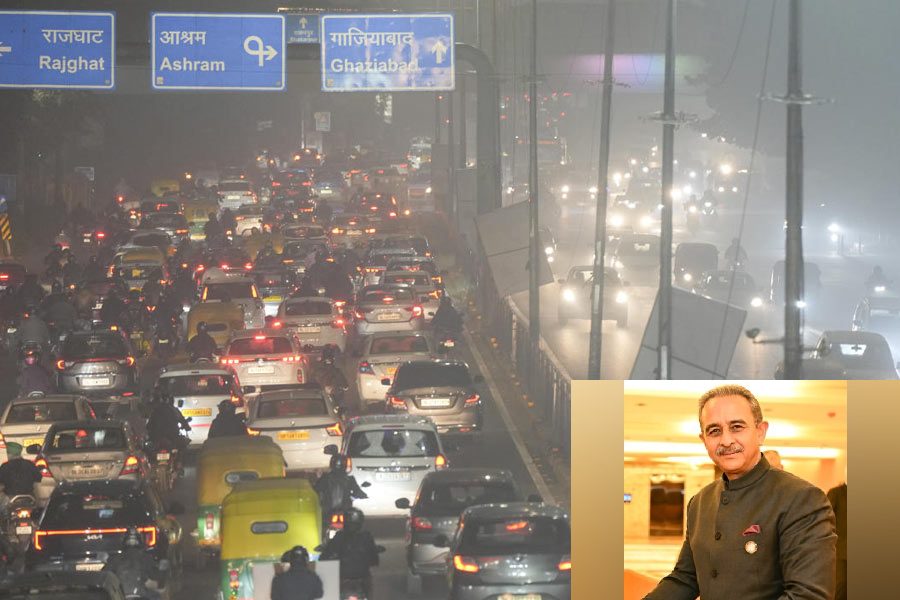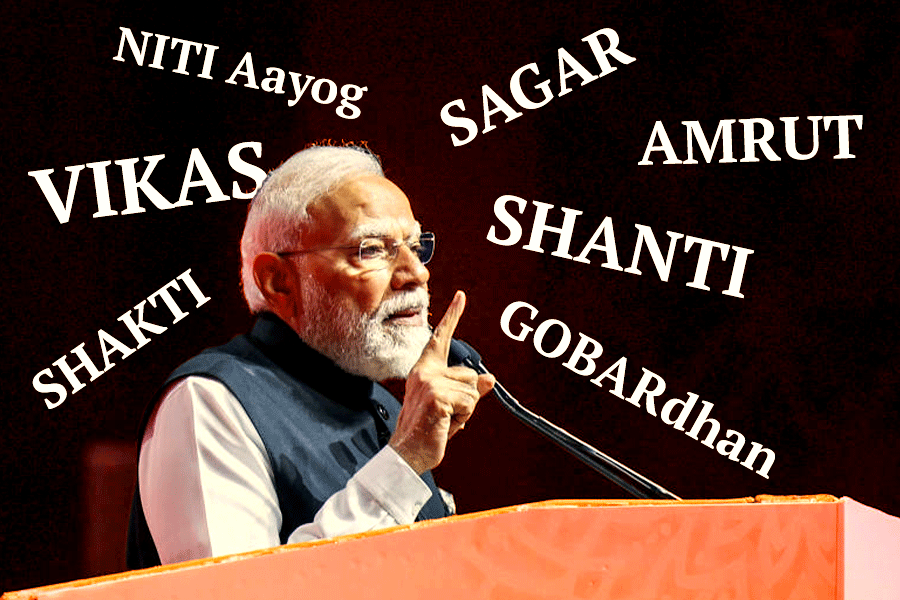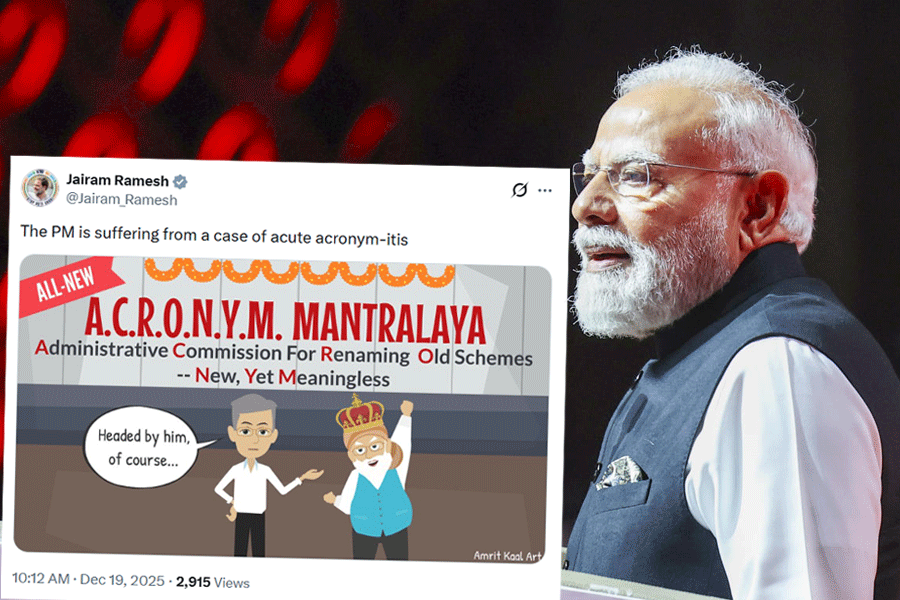 |
| Anything but folk: Himangshu Goswami at Swabhumi |
We thought Dilip Kumar Roy was long dead and, barring annual birthday celebrations put together by Sura-Kavya Trust, there is hardly anybody who cares a damn about the composer and performer par excellence. Occasioned by his centenary some contemporary singers attempted Roy’s songs with limited success. The temperamental genius who scaled numerous heights both as a musicologist and a musician before settling in Pondicherry and later in Pune, faded away from popular memory. His gayaki — a heady mix of Hindustani dhrupad and Bangla kirtan — was so unique that a handful could dare emulating it. By the time his centenary celebrations were over, we knew Roy’s music, unlike his father Dwijendra Lal Roy’s, has died in want of a worthy successor.
Five years later, we are happy to be proved wrong by a singer who has just resumed singing after a brief hibernation. Sudip Bandyopadhyay’s 45-minute-long recital (Sisir Mancha, July 8) was an eye-opener of sort. Bandyopadhyay shares an affinity to poet Joy Goswami. But his gayaki is a world apart from anybody presenting contemporary sensibilities in tune. A plethora of small phrases laced with gamaks, an easeful style made more pleasant by an effortless singing and a commendable mastery over a variety of musical forms, marked his recital. Once he started singing Pata keman kare shodhe alor dena, one could catch Roy’s Vrindabaner leela abhiram at the back of one’s mind.
One remarkable facet of Bandyopadhyay’s repertoire is a propensity to induce a cultural interface through music. Khemtawali sounds like a baul number but what is planted within is an ongoing tussle between folk and court culture which was conveyed both through the words and the melody. The contradictory dictions of Vaishnava Padavali, bhatiali and kawali found a melting pot in Gahanakusumakunjamajhe which he fashioned after one of Tagore’s adaptations of Vidyapati lyrics.
Curiously he set the song in a marching tune played over an ensemble of flute, sitar, guitar and various percussion instruments. Bandyopadhyay experimented with the rhythm as well. The .P. Nayyar effect was noticeable in rangin where kirtan finds a partner in pop. Mane karo chand haye uthechho echoed those Jim Reeves originals that the Salil Chowdhury protégés gladly appropriated in the 1960s.
He signed off with Sumane dekha halo sakale, a number penned by Joy Goswami and occasioned by Suman’s return to stage on October 20, 2000. Musically the number brought back memories of Talat Mahmood’s Je ankhite eto hasi lukano which V. Balsara composed. Bengali music will be enriched if Bandyopadhyay’s individual talent continues a negotiation with tradition.
This Kabiyal evening also featured a recital by Mitul Dutta. A poetic streak runs through her self-composed numbers. She is adept in capturing the fleeting epiphanies of early romance (for example, Ekta bhari apattikar pakhi).
Conflict with the consumer culture brings out some ironic observations at times (Kena je dakle amay). Sexual overtures mark out Bandhura tariye diyechhe, her most commendable composition till date. Dutta prefers the upper octave at the risk of a strained timbre and comes out triumphant in a lovely lullaby (Raat jege lekha kabitar mato). Once she settles down with her own style, Dutta is sure to leave a mark. Kazi Kamal Naser also sang. At his best he can be described as a poor man’s Kabir Suman, happy to remain overwhelmed by his mentor’s shadow.
H imangshu Goswami’s recital at Swabhumi Urban Courtyard was a disappointment (July 10). Organised by Halo Heritage and Nrityakutira, the soiree saw the London-based singer offering a confusion of musical sort in the name of folk music. Goswami falls under the category of singers who adopts the folk style to entertain a predominantly urban audience but claims authenticity by swearing in the name of Abbasuddin Ahmed and Nirmalendu Chowdhury, who pioneered this trend. Thus when he sang a bichchhedi song — Amay de go radhe — the scent of the soil was simply missing.
Numbers like Kakhano tumi jena explained his popularity among the non-resident Bangladeshis. It simply huddled together some names Bengali music would feel proud about in a lilting tune remote from Bengali folk. That’s about all. One Basudev Ghosh composition dating back to the 16th century saved the organisers from severe embarrassment.
Inclusion of rock band Cactus for an unplugged performance defied all justification but one. Lately the band is venturing into folk territory with all earnestness and some stimulating experiences are to come. Even then, a self-titled Baul-Rock number like Tui amay pagal karli re was the last thing the sparse audience would have loved to listen that evening.











